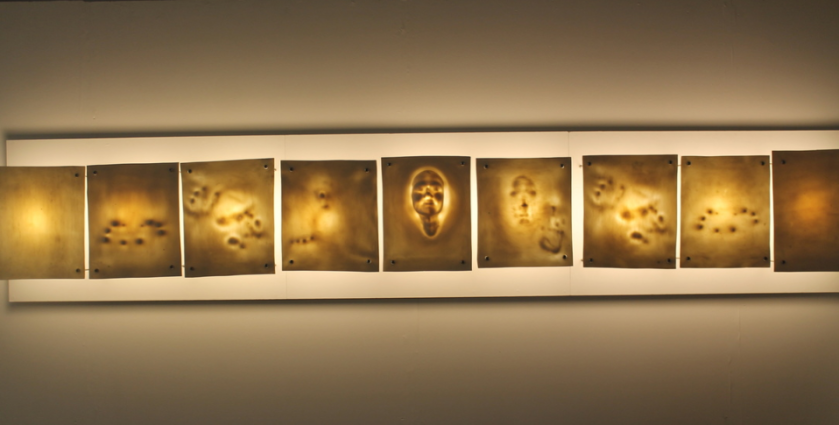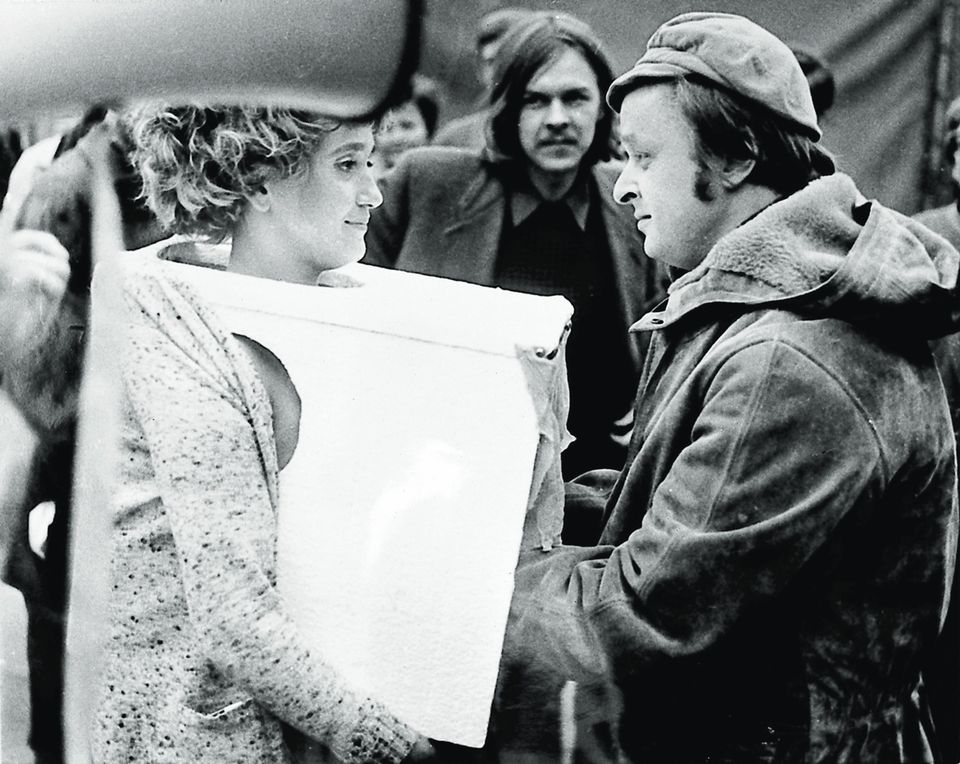My chosen artwork is by Huguette Caland, named ‘Self Portait’, 1971, which is a piece from a series of drawings I saw in the Venice Biennale, which were extraordinarily delicate, intimate ink drawings of female genitalia. I decided to go down the route of using theories discussed in Cath’s Goddesses and Monsters about phallic women and castration fear, which has created an element of humour in my work.

I started by drawing her piece and created collage-type drawings of it, which lead to different drawings of vaginas in Caland’s simplistic style.
Firstly, I was having difficulty on how to actually develop such an open piece; I could have stuck with its simplicity and have my work open to interpretation by using delicate drawings, or I could incorporate all that I’ve learnt through lectures this term and create interesting, but rather abstract, set of pieces that could still be open to interpretation.
I wanted to create these pieces without taking the meaning behind them too literal, and have them mean something different to every spectator, which would in turn make my pieces even more interesting to look at and discuss.
I used the original artwork of the vagina and used a theory from Constellation about phallic women and castration fear to develop it, which helped me create this idea. I also used materials to make it symbolic, so that it wasn’t too literal.

I’m very happy with how they’ve all turned out, and I’m pleased that I went down the more abstract route. Creating a sense of wanting to touch the pieces and analysing why I made them in this specific way is exactly what I wanted.
The materials I’ve used, I believe, are very important to the pieces I’ve made. I chose to use a combination of fabrics, such as velvet, silk and lace, alongside clay, paint and wood. These contrasting materials heavily link to Goddesses and Monsters, as well as Caland’s Self Portrait. They link by using Ovid’s myth of Pygmalion and constructions of the feminine ideal. Themes of gender construction and embodiment identified in the poem and investigates themes of sculptural transformation, corporeality and the desire for idealised somatic forms. The myth offers insights therefore into key tropes relating to gender configuration and discourses of materiality when creating/fashioning representations in visual culture. By dressing up my vaginas with fabrics that conceal and reveal at the same time, especially soft fabrics that are very inviting to the viewer, I create a contrasting piece. The contrast is in how vaginas are seen so much in porn but not in everyday life, thus is hidden and is distracted by other comforting parts of the body, such as legs and breasts. I chose to make vaginas in all shapes and forms and used fabrics to create a sense of irony and humour to how we dress our bodies up to distract the male gaze from how ‘horrifying’ vaginas are. I’m also looking into how I might incorporate vagina plastic surgery, such as cutting off the labia in order to create a ‘tidy’ vagina.
The wood and the clay offers insight to how vaginas really are; the clay creates folds and an almost realistic texture to the vagina, while the wood supports it all, signifying it’s strength.

From my previous assessments, I planned to incorporate my vagina pieces into photography by using them as props and consider other social issues, such as the red light district, which stereotypically include heavy fetishism imagery. These ideas were brought on by the Ways of Exhibiting part of the course, which lead to creating work that fitted into my subject work perfectly because of this.
I also created numerous different sizes of clay, abstract vaginas – especially smaller ones, and I hope to include issues such as the ‘designer vagina’ that means to “tidy” vaginas by trimming the labia. I want to make them look floral from certain angles, which would aesthetically deem them beautiful, such as what I’ve done below;

I began by making miniature clay pieces of vaginas from drawings I made in my sketchbook. I made 23 in total and they’re all in various shapes and sizes and have an organic look to them to fit in with the illusion idea I have to take pictures from different angles and have them look floral. Here are how they look before being painted;
And below are after being painted. I then began experimenting with different camera angles to get the best effect for my idea. Some came out terribly while others really worked!
I stuck with using a bright pink/red colour for the vaginas to resemble bright red flowers, and I’m really happy with how they turned out. It was difficult to get my phone camera to focus on the pieces very closely, therefore I wasn’t able to take zoomed in pictures and create an even better illusion to get people to question what they are, but I do feel that they look organic enough for this effect anyhow.
I was also able to finished shaped/relief paintings I began a while ago, which were, once more, based off of drawings in my sketchbook. I first off used clay to add depth to the shapes I’d cut out, then painted and used fabric on one to correspond with my previous work about fetishism with, for example, hair, clothes, bows, etc. They tie-in my previous shaped paintings with my clay sculptures well by being a transition between the two and they also helped me with my dissertation research by letting me look further into these topics.



















































































































